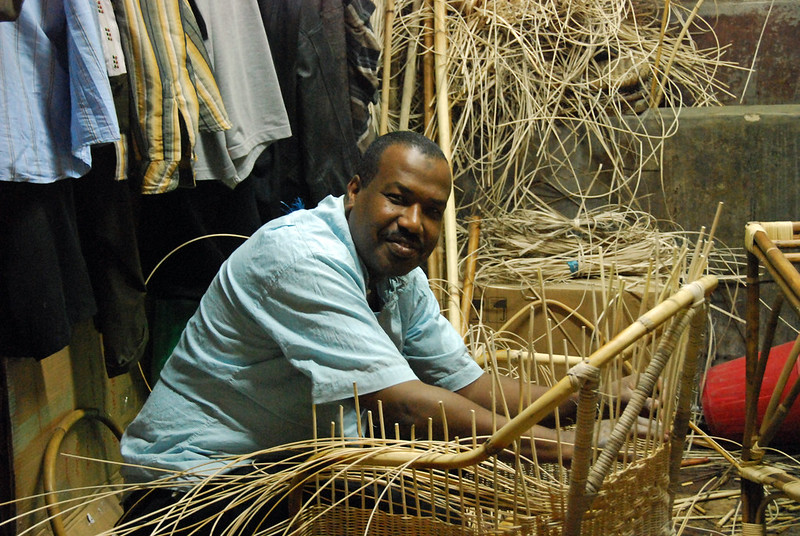India is responsible for the majority of the world’s open defecation – a practice that spreads disease and cuts lives short. To address the issue, the Indian government’s Swachh Bharat Mission (SBM; Clean India Mission), which completes its third year, has been providing toilets, particularly in rural areas where they are most needed. SBM has also made explicit the importance of behaviour change and getting people to use those toilets.
As we know from existing studies, the mere presence of toilets is not enough to end the entrenched habit of open defecation. To promote the adoption of sanitation in India, the focus needs to be at least two-pronged: reframing the latrine as an attractive and necessary commodity for all and ensuring that promotion addresses why people do not use toilets in the first place.
The understudied phenomenon of latrine use
Findings from a recent 3ie scoping paper I co-authored with colleagues shed light on the evidence about existing interventions, the barriers to latrine use and pointers for designing successful programmes. The scoping work was conducted to inform 3ie’s Promoting Latrine Use in Rural India grant programme. This programme aims to generate actionable behavioural insights to inform sanitation policy and programming. We are supporting rigorous impact evaluations of low-cost interventions to promote latrine use in rural India.
Through our scoping work, we found scant rigorous evidence from India on how to promote latrine use. There were just four impact evaluations and seven other quantitative studies focusing on latrine use in rural India. Published rigorous quantitative research focused mainly on evaluating previous national sanitation programmes that don’t emphasise behaviour change.
As part of our scoping work, we also had two events where we consulted experts about a range of issues related to sanitation in rural India. We were able to interact with many organisations, which were (like us) testing different ideas for promoting latrine use.
What is clear is that sanitation in rural India is complex. Even if we solved the problem of latrine use, there are still issues related to extracting and transporting the contents, treating them and re-using them, with tremendous variation between states.
What we learned about latrine use
From our scoping work and consultations, there are a few key lessons we learned that can guide future research and sanitation programming.
 Personalise household latrines: The latrine needs to be attractive for people to want to use it, especially if they don’t usually do so. No one enjoys feeling cramped in a dark and smelly latrine. The experience in a latrine can be even worse if it is designed in a way that is not responsive to the needs of different populations, such as the elderly, women and children. Sanitation research in rural India has shown that latrines constructed with a household’s own resources, and according to personal specifications, are more likely to be used than generic latrines constructed with government funding or other external resources. In the case of the latter, contractors often take bulk order for latrine construction, without much consideration for what people actually want. This means that there is scope for designing programmes that support the personalisation of household latrines to make them attractive and accessible to all household members. Similarly, there is also scope for giving people other options. There are plenty of low-cost latrines that are often not used simply because people don’t know enough about them, or are pressured into buying more expensive designs.
Personalise household latrines: The latrine needs to be attractive for people to want to use it, especially if they don’t usually do so. No one enjoys feeling cramped in a dark and smelly latrine. The experience in a latrine can be even worse if it is designed in a way that is not responsive to the needs of different populations, such as the elderly, women and children. Sanitation research in rural India has shown that latrines constructed with a household’s own resources, and according to personal specifications, are more likely to be used than generic latrines constructed with government funding or other external resources. In the case of the latter, contractors often take bulk order for latrine construction, without much consideration for what people actually want. This means that there is scope for designing programmes that support the personalisation of household latrines to make them attractive and accessible to all household members. Similarly, there is also scope for giving people other options. There are plenty of low-cost latrines that are often not used simply because people don’t know enough about them, or are pressured into buying more expensive designs.
Implement and evaluate theory-driven behaviour change interventions: We don’t see many published studies on latrine use interventions, especially theory-driven behaviour change interventions. There are many informal approaches being used in districts or panchayats (village councils) in India to get people to stop defecating outdoors. While these are often inspired by name-and-shame approaches, they are not driven by underlying theories of human behaviour, nor are they informed by evidence of what works. These include the well-publicised Good Morning Committees, consisting most often of children who wait in prominent open defecation spots in the busy early morning hours. They whistle or shout to shame those relieving themselves out in the open. It is not clear if these committees are having any impact on reducing open defecation. Worryingly, these approaches can have negative implications on human rights, as they can cross an ethical boundary and result in extreme coercion. There is a lot more that can be done to harness insights from the emerging field of behavioural science to address the major challenge of open defecation using ethical and evidence-based methods.
Measure latrine use accurately: We find that it is difficult to trust the numbers when it comes to latrine use. Latrine use is a private behaviour, and is usually measured through self-reported answers from household members. Given the ubiquity of sanitation messaging in the country, survey respondents are often aware of what is a socially desirable answer. There is therefore a strong tendency to give ideal, rather than accurate, responses. For instance, people may say, ‘Of course, I don’t litter. Of course, I help my wife with the housework. Of course, I use a toilet.’
Asking individuals to recall previous instances of toilet use presents another problem. They may not remember correctly, especially if they use the toilet at certain times and openly defecate at others. Recent research suggests that asking individuals to recall their toilet use in the last two days is more accurate than asking about their average daily toilet use across multiple days. There is also the issue of seasonality that needs to be kept in mind – people may more likely use the toilet in the monsoon compared to other seasons. Survey questions should therefore consider different sources of bias in self-reported responses. By anticipating and mitigating socially desirable responses through balanced, open-ended questions, we can improve the accuracy of latrine use survey data.
While much remains to be addressed, we can take concrete steps now to improve future research. To start, we can use theory as a framework to develop, implement and evaluate behaviour change interventions. We can obtain more accurate data by carefully considering the latrine use question. Finally, we can help households design latrines that meet their needs, and that they see as assets.
3ie’s Promoting Latrine Use in Rural India grant programme aims to generate evidence on low-cost, behavior change interventions to reduce open defecation in India. Through a focus on behavioural science and rigorous methodology, this programme’s goal is to inform the Swachh Bharat Mission prior to its conclusion on 2 October 2019. The programme has two phases: a three-month phase of formative study to develop contextually-relevant, feasible interventions, and a 12-month impact evaluation phase in which interventions were implemented and evaluated using rigorous counterfactual methodology. 3ie will make awards for four impact evaluations by the end of this year. More info






